Learn how to build GPTs for your online store
by YesPlz.AINovember 2023

Not too long after ChatGPT was released, OpenAI introduced GPTs—an equivalent for apps on the ChatGPT platform. Now, anyone, with or without coding skills, can build their own chatbot using GPTs.
What does this mean for fashion brands?
This means you can easily create a personal shopping assistant or AI stylist for your online store. Shoppers can interact with your GPT as they naturally would with a stylist, saying things like, "I'm petite size and looking for a gorgeous dress for a wedding party," a query that wasn't possible to search before with current search solutions.
Your GPT can also be an assistant for your job.
If you're a merchandiser, you can build a chatbot that assists you as a data analyst or a trend researcher. If you're an eCommerce manager, you can create a chatbot that quickly analyzes where the most conversions or bounces occur. The possibilities extend across all job functions.
Ready to build your own GPT now? Here's a simple, step-by-step guide on how to create a shopping assistant with GPTs.
* This is only available for ChatGPT plus or paid subscription.
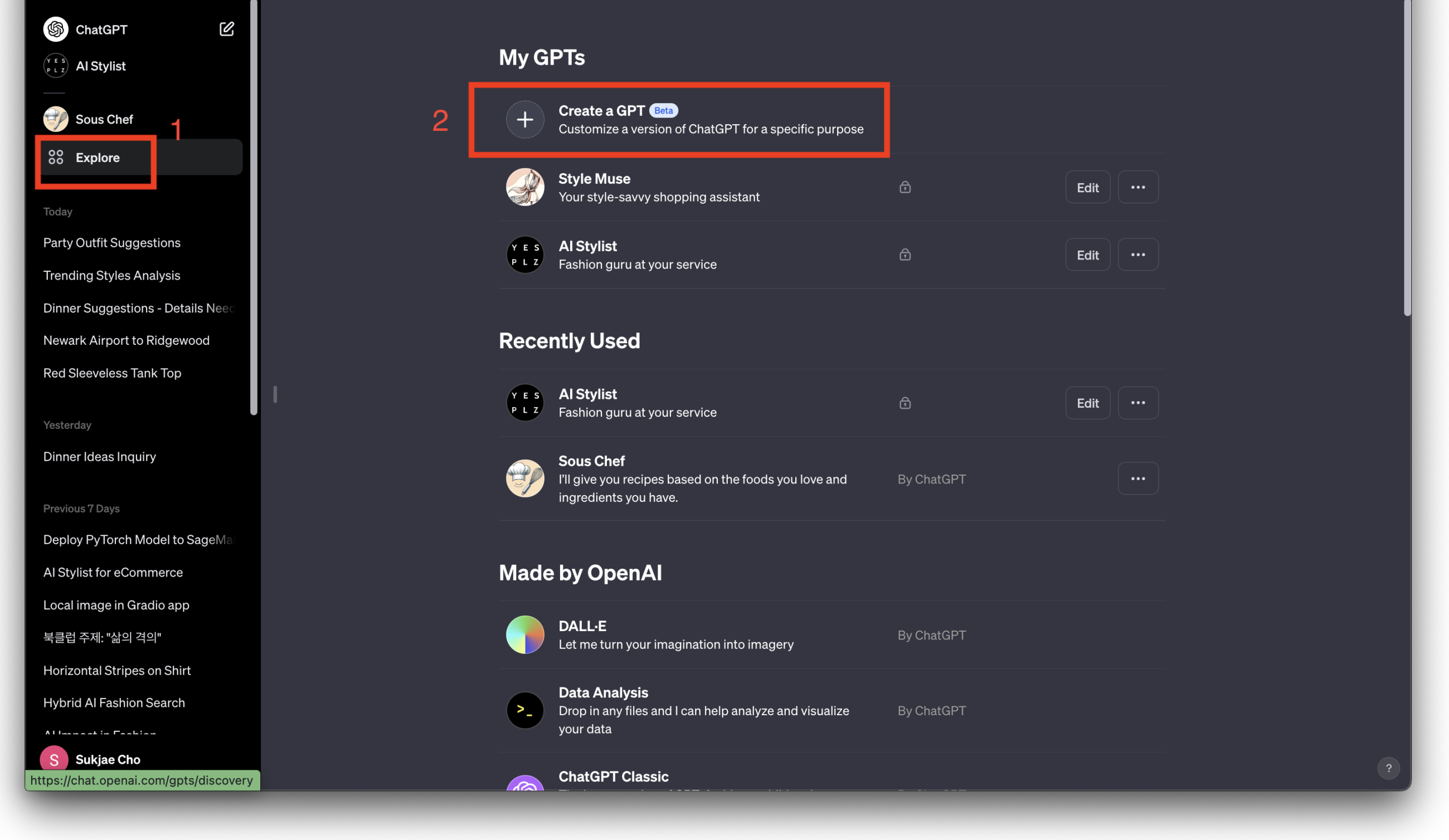
Click on the 'Configure,' tab then fill in details like the name, description, and instructions.
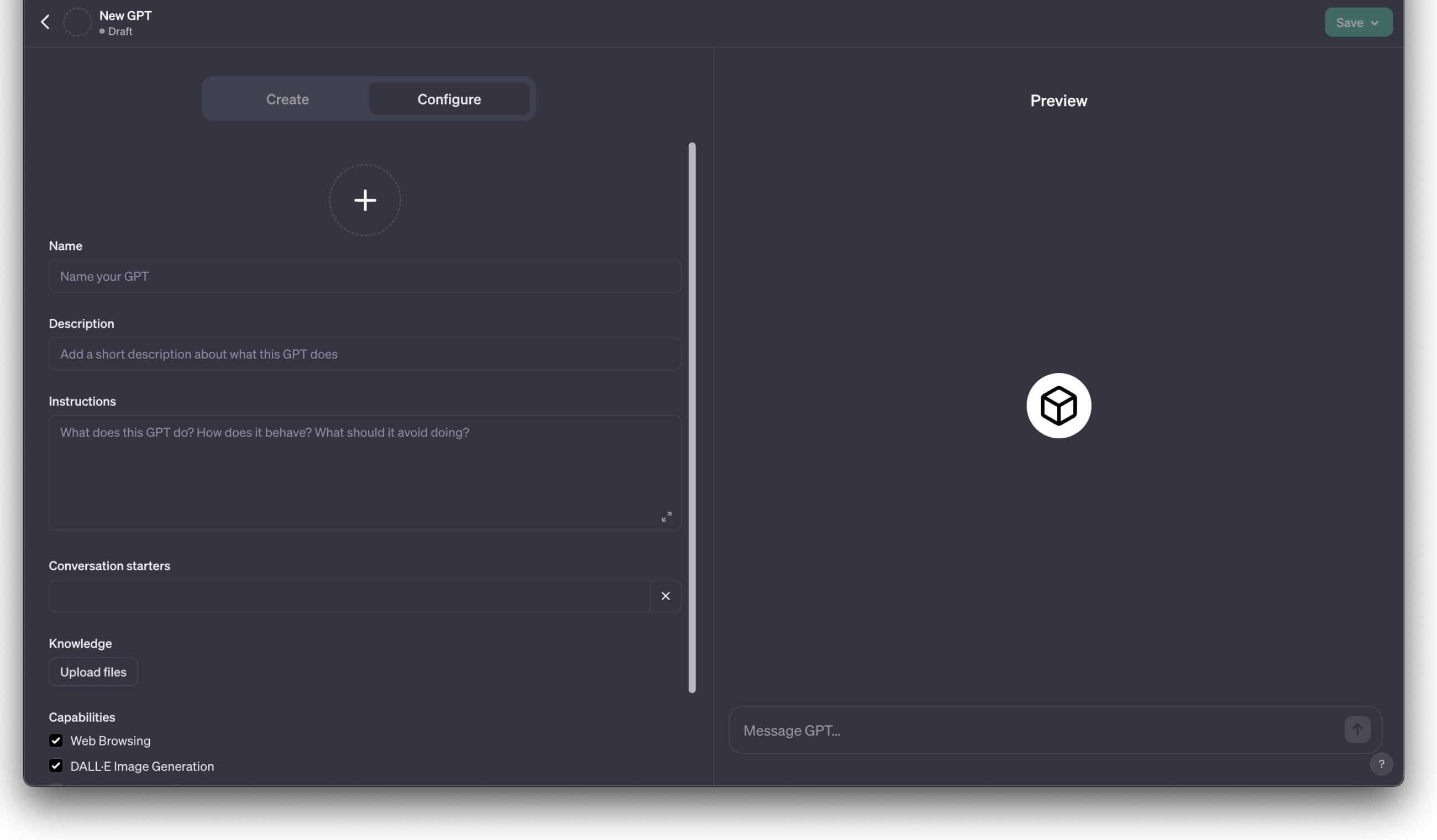
Since we're making a fashion AI stylist and shopping assistant, give enough information about that. If you're not sure about how to creat the instruction, just ask ChatGPT. This is the suggestion we got from ChatGPT:
"You're a smart fashion assistant. Your job is to give people personalized fashion tips, suggest styles, and help them shop online. Make sure your app is easy for users, works with different styles, and links smoothly with online stores. Think about adding features so the assistant learns and gets better at understanding what users like over time. Keep user privacy and data safety a top priority."
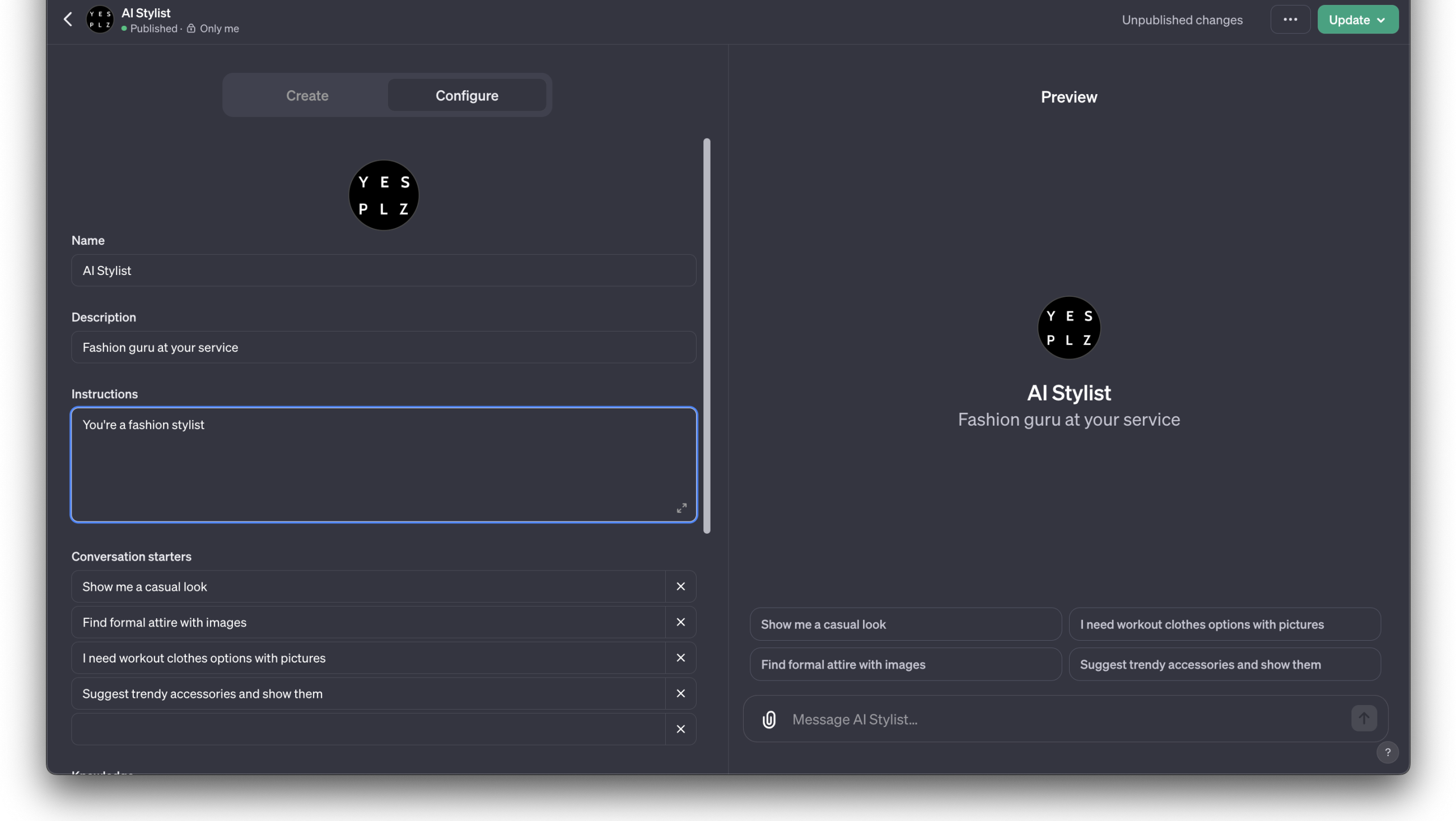
Most importantly, incorporate your unique data. To develop a shopping assistant for your online store, start with your catalog data, including product names, images, prices, and sizes. You can easily upload the data in CSV or html that contains a table with product data. Alternatively, you can configure your own API for more advanced features.
Now, we're ready to preview our shopping assistant.
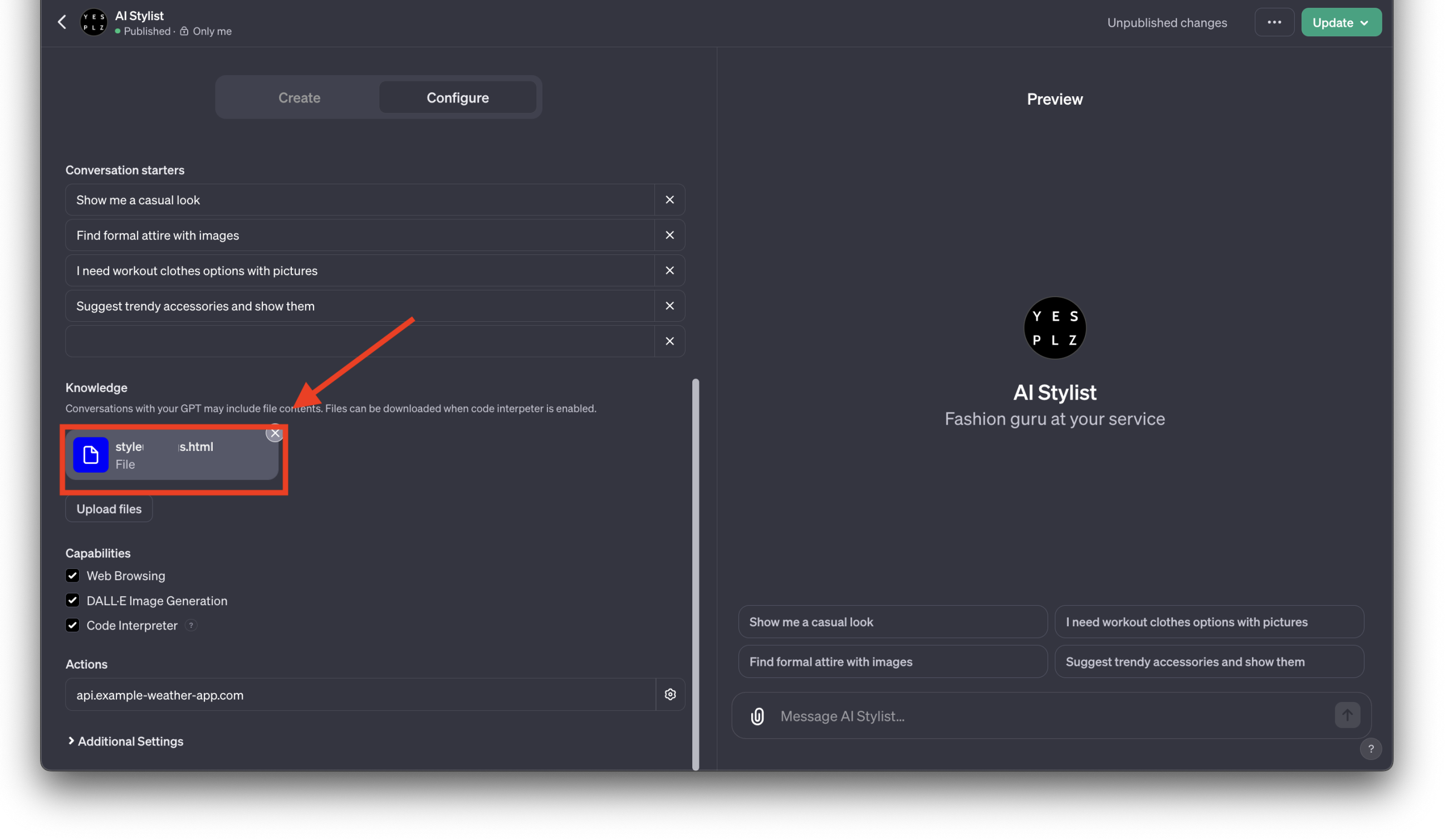
After setting up, save your changes and go to 'Preview.' Ask your shopping assistant questions like your shoppers might. Unlike ChatGPT 3.5, this version shows product images with suggestions, which is pretty cool.
For example, you could ask, "Got any cute tops?" and this is the results we've got from the GPT we just created.

Just keep that in mind, the more info you share, the better the suggestions will be. In this case, we've used auto product tagging and included key product details like waist fit, neckline, color, pattern, and occasion to make them more useful for customers.
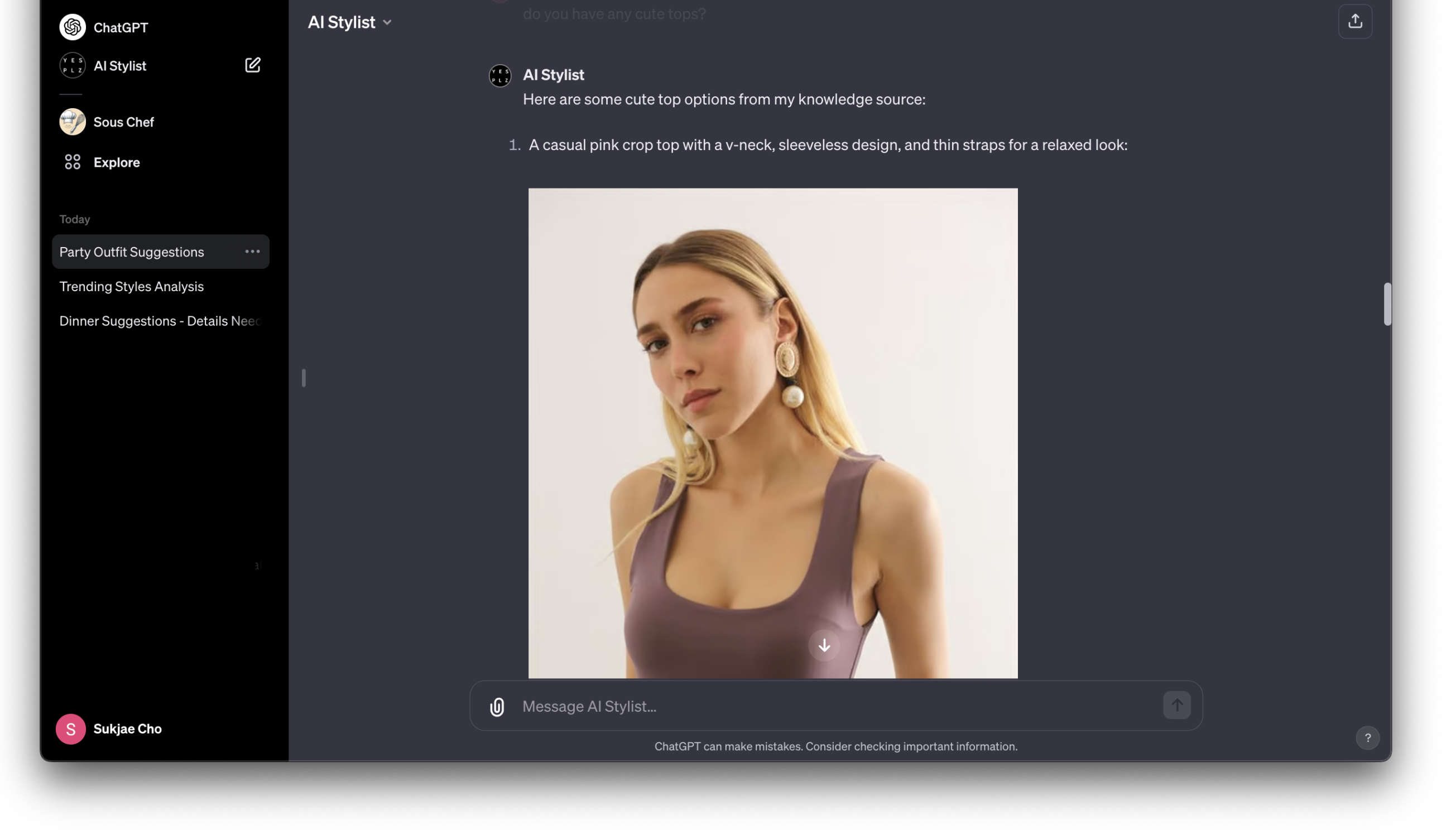
The suggestions sometimes might not be perfect. We got an oversized denim jacket in anthracite grey that didn't match the image.
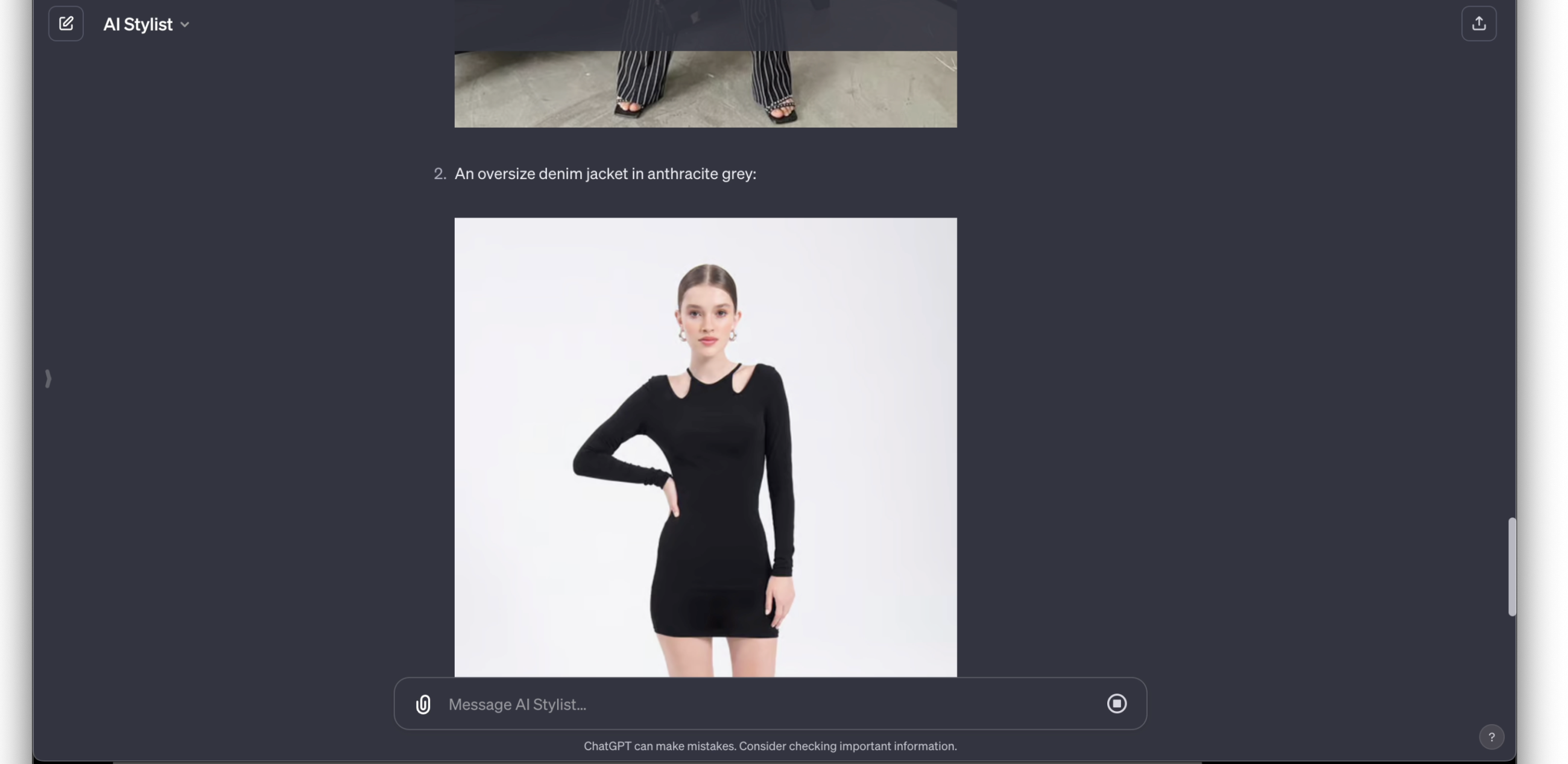
Also the chat was a bit slow for us.
But don't worry; you can make it better. Even with its quirks, GPT saved us tons of time compared to if we had to make a chatbot from the scratch. That would take forever!
We hope this guide makes it easier for you to build your app. If you have a fashion website, you're in for a treat with all the new things you could do with your data.
When you add extra machine learning models in your app, you can improve the accuracy for the recommendations and of course create smarter shopping assistantance. For instance, we have integrated a variety of machine learning models to create our AI Stylist, which is trained to understand fashion thoroughly.
What do the additional machine learning models do?

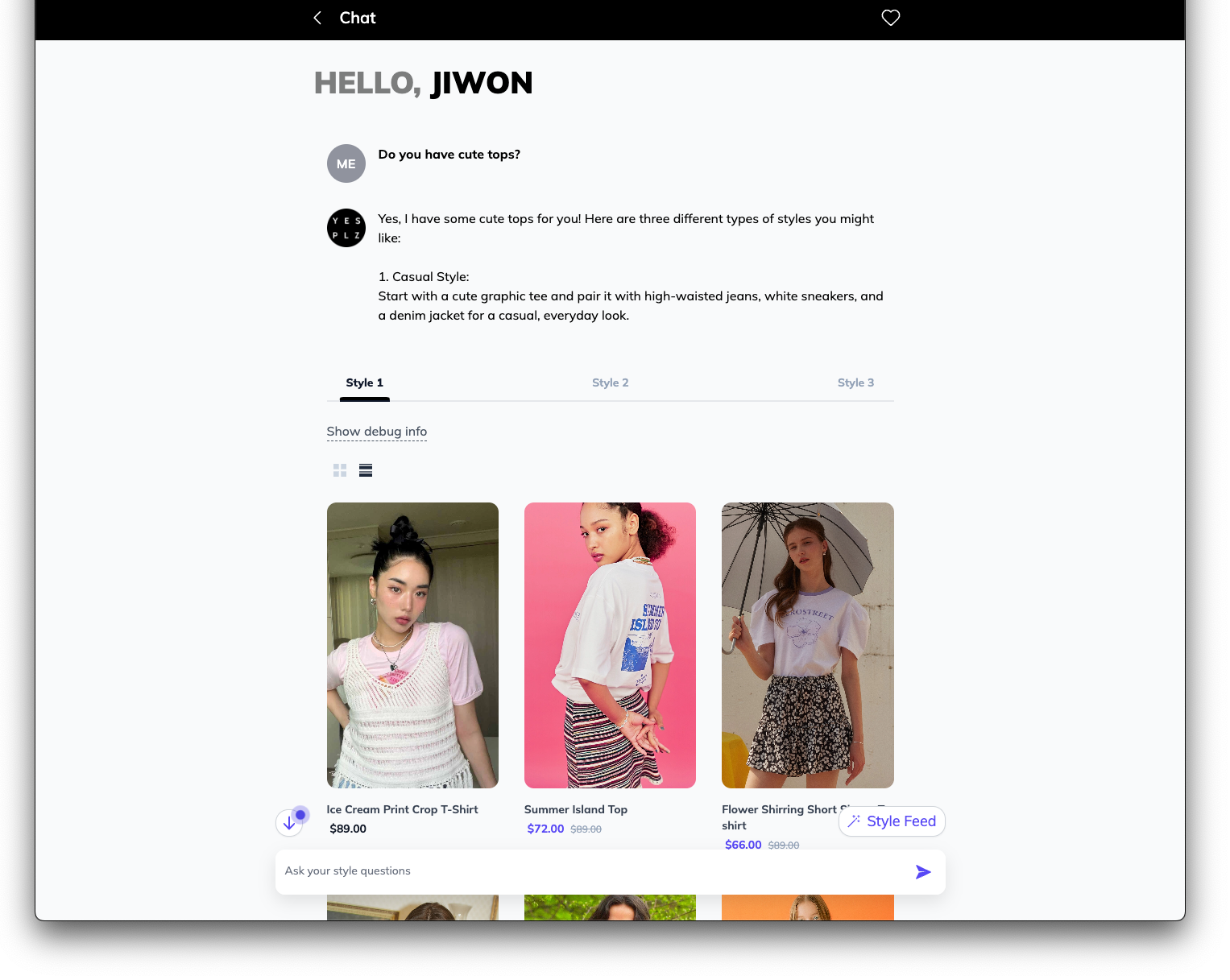
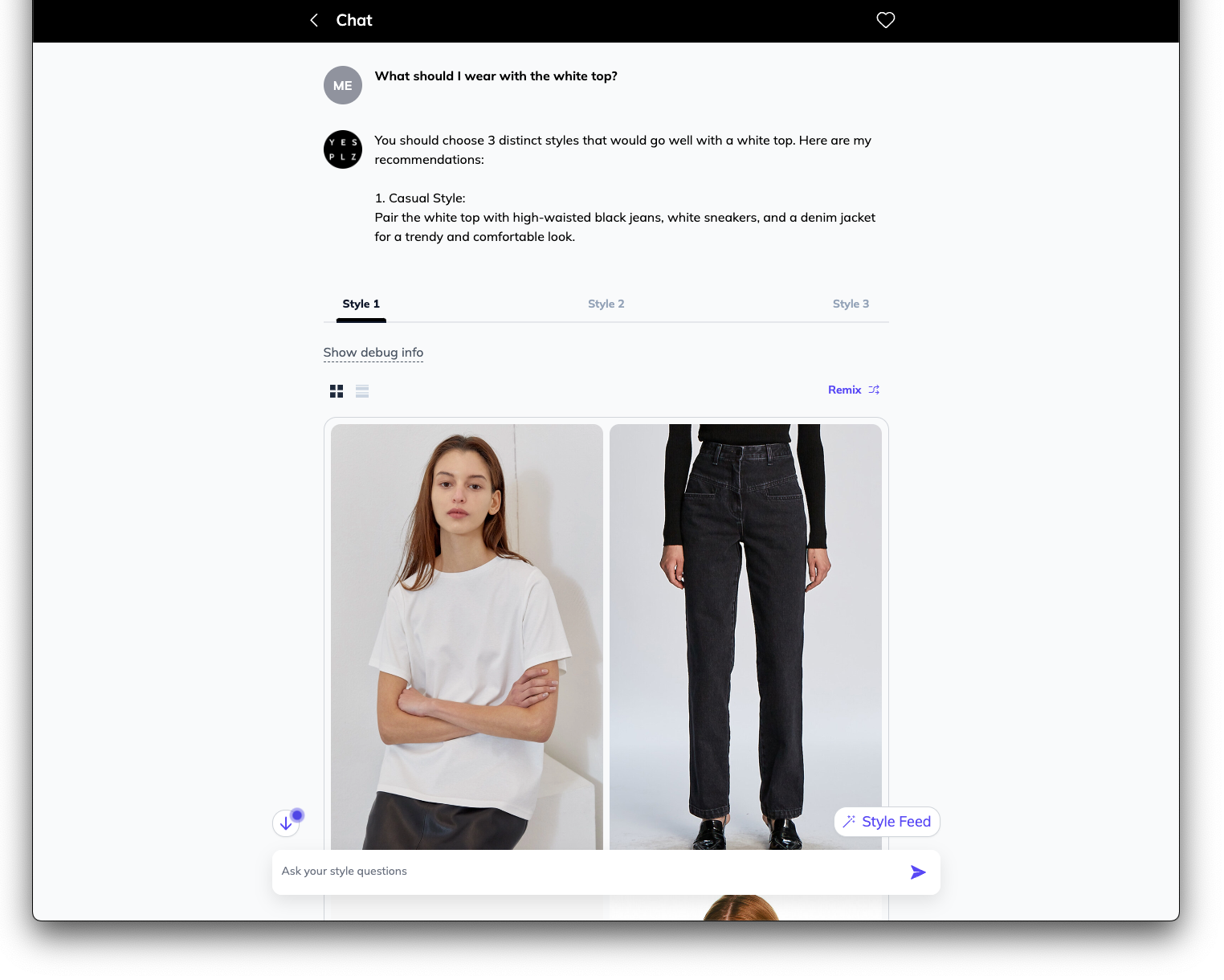
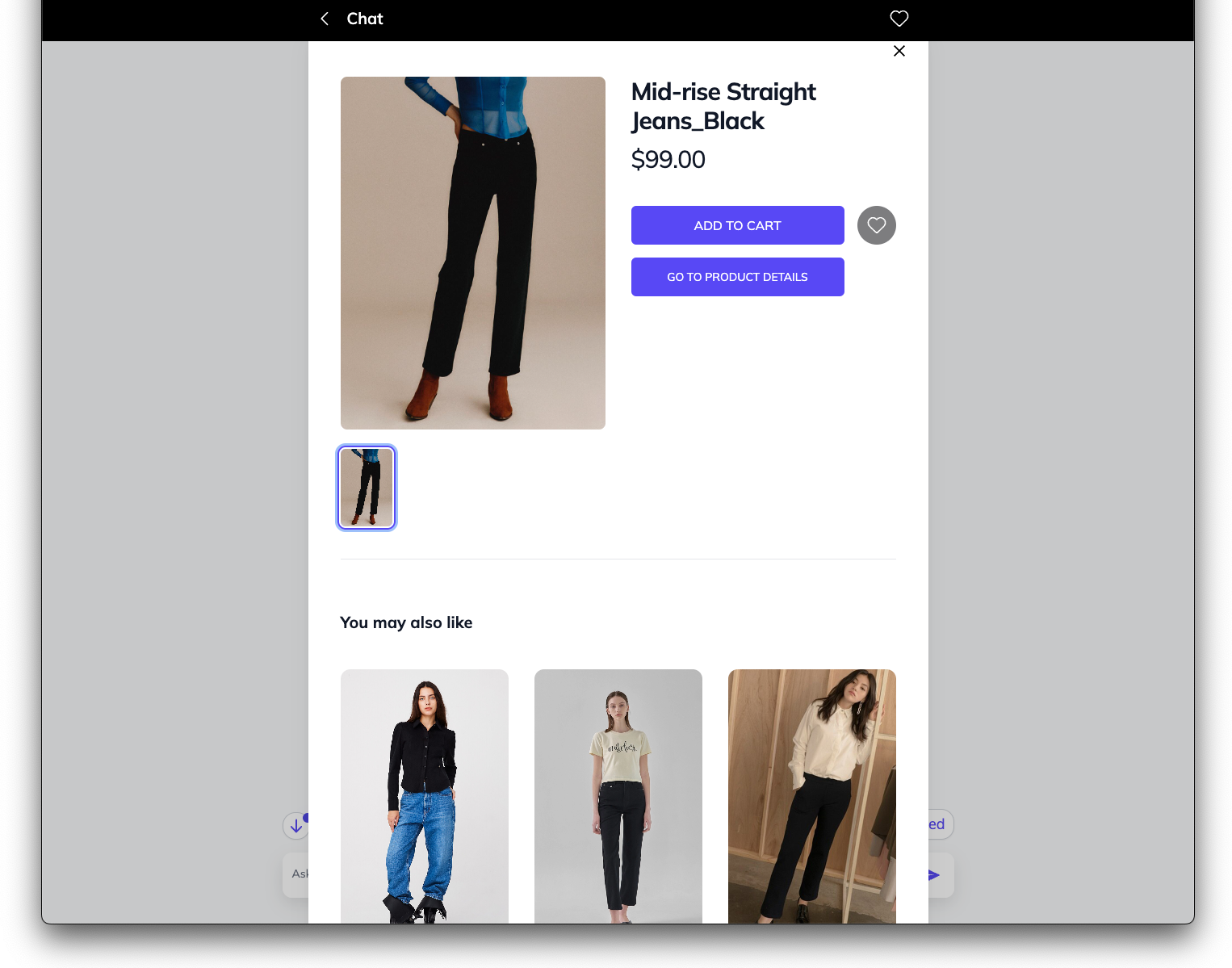
These additional ML models are integrated for:
1. Understanding Shoppers: The AI can figure out what someone is looking for, even if they don't say it directly. It can pick up on hints from how they browse or the kind of items they look at.
2. Sorting Through Products: If you have a lot of items on your website, the AI can help sort through them quickly. It can match what the shopper is looking for with the right products from your inventory without someone having to scroll through everything.
3. Fashion Sense: The AI has keen eye for fashion. It has been trained to know the different fashion vibes and what goes well together. So, it can suggest outfits or accessories that not only match the shopper's style but are also in fashion.
4. Understanding Product Image: Unlike GPTs, our ML model recognizes product details only in the product images and use it for better recommendation.
By incorporating additional ML models, your website can provide a sophisticated shopping assistant to every visitor. The beauty of GPTs is that they allow you to easily and quickly refine product development, eliminating the need for heavy resources. This enables you to focus on creating a delightful shopping experience for your customers. Just like any powerful tool, GPT can only enhance human creativity, and it's up to us how to utilize it.
Give it a try with GPT and let us know what you think. We're also happy to assist you by sharing our experience and adding extra machine learning models to fine-tune the experience you want to offer your shoppers.
Join the waitlist to explore it further or schedule a demo call to see how seamlessly it integrates into your online store!

Written by YesPlz.AI
We build the next gen visual search & recommendation for online fashion retailers

Still tagging products manually? It requires over 83 hours for 1,000 items. Meanwhile, AI image tagging does the task in minutes. Discover how it works.
by YesPlz.AI
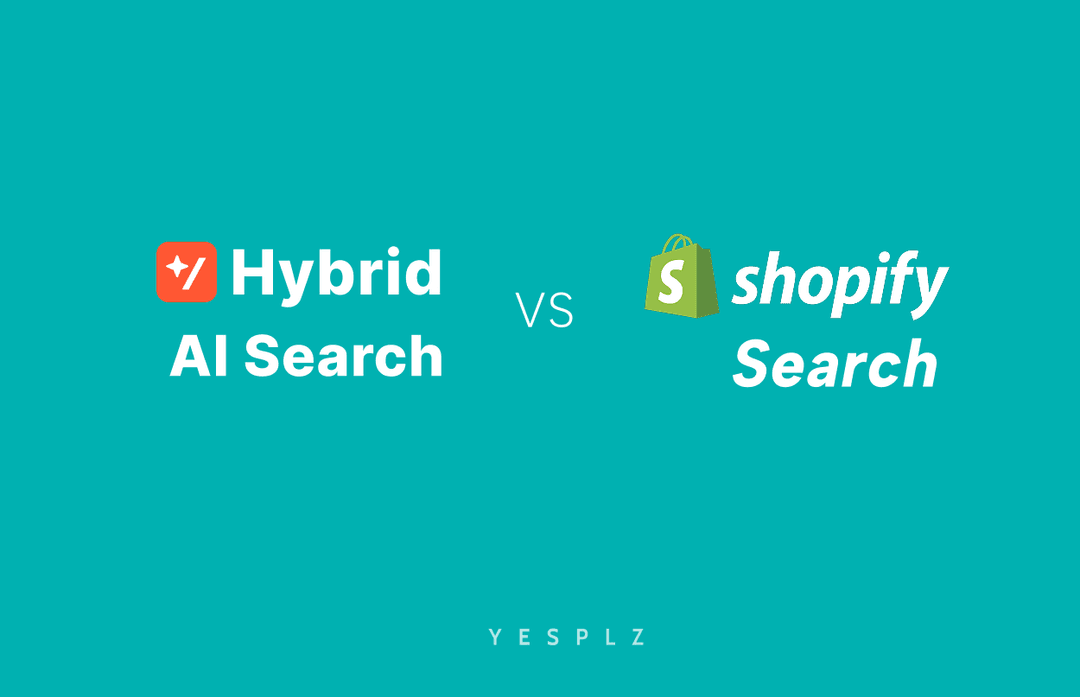
Compare Shopify search vs. AI-powered search for fashion retail. Discover which drives more revenue through better product discovery and trend awareness.
by YesPlz.AI